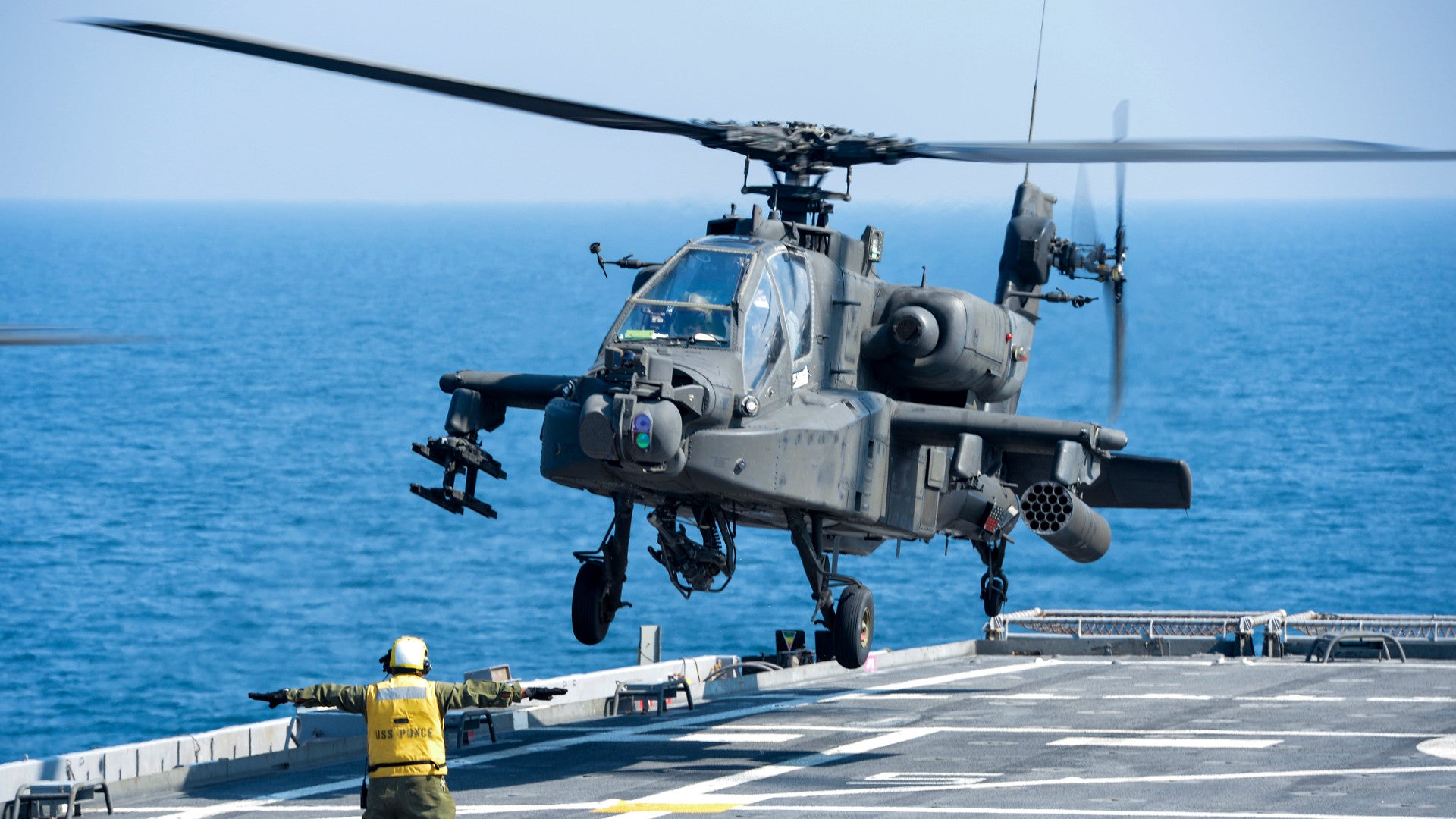The U.S. Army has released new details about its plans for improving the AH-64E Apache attack helicopter as part of the future Version 6 upgrade package. The updates will include a major boost in the gunship’s maritime capabilities, make it easier for them to team up with a much broader range of unmanned aircraft, and improve the helicopter’s general ability to collect and share information, engage hostile targets, and avoid threats.
The Army’s Apache Attack Helicopter Project Office shared the details as part of a briefing to industry partners, which Twitter user @MIL_STD then posted online on Aug. 18, 2018. The presentation shows that the service completed integrating the Version 4.5 capabilities into the AH-64E fleet in 2017 and plans to finish with the Version 6 updates by 2026.
The Army first began receiving AH-64Es, previously known as the AH-64D Block III and also called the Apache Guardian, in 2011. The helicopter will remain the service’s primary attack helicopter through at least 2048, though the gunship version of the Future Vertical Lift family of aircraft is supposed to reach initial operational capability in 2034, according to the Apache Project Office’s briefing.
As such, it will be important for the Army to continue modernizing the Apaches in the meantime to keep up with existing and future threats. Previous updates have already added Link 16 data links, new communication and communication relay systems, the ability to operate as a manned-unmanned team with other pilotless aircraft, and the ability to carry external fuel tanks to extend the helicopter’s range, among other improvements.
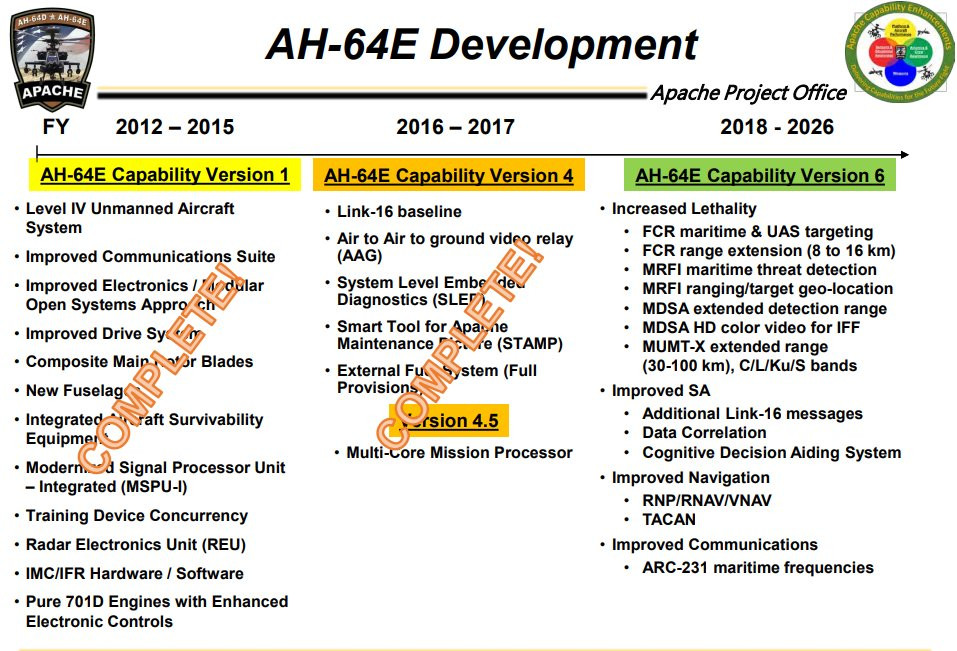
The Version 6 package is particularly interesting for its emphasis on over-water combat, which is not something one might necessarily expect the Army to be worried about now or in the future. However, with increasing potential operations from bases on land in and around constrained waterways, such as the Strait of Hormuz or the Baltic Sea, or distributed and expeditionary operations that could involve flying from ships or sea bases, such as in broad expanse of the Pacific region, the service has been steadily more aware of possible maritime missions for the gunships for years now.
“Current and potential future conflicts mandate the need for the Apache to counter enemy anti-access/area denial [threats] such as unmanned aircraft, amphibious assault vehicles and hovercraft, at extended ranges and under adverse weather conditions,” another official document, specifically describing planned upgrades to the helicopter’s AN/APG-78 Longbow radar, explained, according to a 2016 story from AINonline. The Version 6 configuration will feature an updated version of the mast-mounted Longbow that can better spot and engage maritime targets and small unmanned aircraft, as well as just double the range of the system, which is presently around five miles.
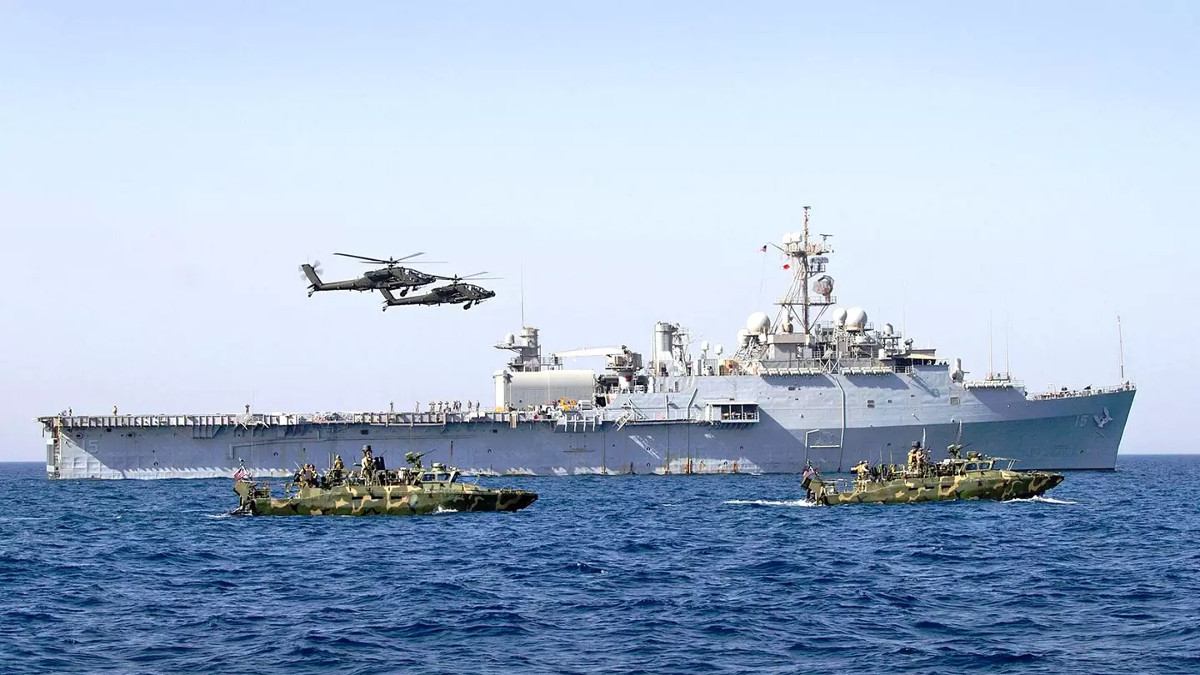
An update to the AN/APR-48B Modernized Radar Frequency Interferometer (MRFI) electronic warfare system will also improve the Apache’s ability to identify unspecified “maritime threats.” Other updates to this system will give the helicopters better electronic support measures and targeting capabilities in general, allowing it to more accurately determine range and geo-location of potential threats, such as radars associated with surface-to-air missile systems, and other emitters. There will be upgrades to the AN/ARC-231 multi-mode digital radio to better support over-water missions, as well.
Version 6 AH-64Es will also be able to combine these updates with increased capabilities for manned-unmanned teaming. The updated Apaches will have the Manned-Unmanned Teaming-Extended (MUMT-X) system, which extends the range at which the helicopters can share data with drones and allows the crew to interact with a more diverse group of unmanned aircraft – possibly including an advanced, pilot-optional scout rotorcraft and other future tactical unmanned aircraft that the Army is exploring now – using C, L, Ku, and S band data links.
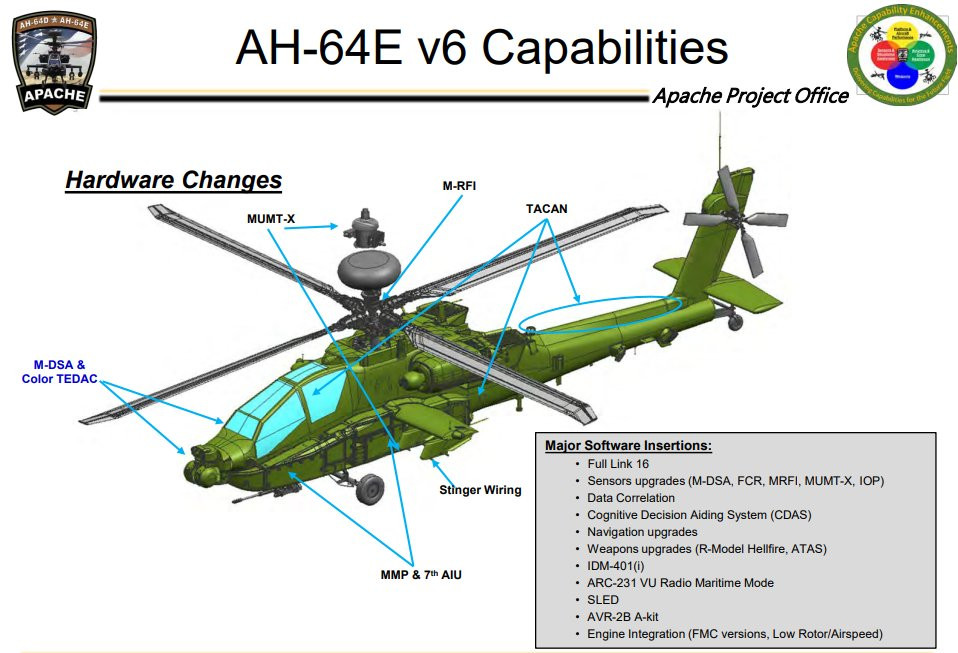
“Right now, the requirement that was written for us was to talk to tactical common data link systems, which is the [MQ-1C] Gray Eagle and the [RQ-7B] Shadow V2. We can talk to those systems today,” then-Apache Project Manager U.S. Army Colonel Jeffrey Hager told reporters in 2016. “In a few short years, we’ll be the first airframe to talk to any systems out there on the battlefield, and that includes naval security assets, the Marines – anything that’s flying out in the airspace, they’ll be able to capture that data.”
A built-in air-to-air-to-ground relay in MUMT-X, based on the Rover data link, means the Apaches will be able to send video feeds and other data from those drones straight to personnel on the ground or ships below, as well. The Army demonstrated the ability of an existing AH-64E, together with an MQ-1C Grey Eagle unmanned aircraft, to provide stand-off targeting support to artillery units ashore and a communications relay for ships at sea during the Rim of the Pacific (RIMPAC) 2018 exercise. This also again highlighted the gunship’s existing maritime capabilities.
The Version 6 package isn’t limited to expanded over-water and manned-unmanned capabilities, though. It includes a host of other updates across the AH-64Es other systems, as well.
The helicopter’s nose-mounted Modern Day Sensor Assembly (M-DSA) sensor turret will get its own boost in its detection range and camera fidelity, with the latter upgrade specifically to help with identifying potential threats at longer distances. The MDSA already includes electro-optical and infrared video cameras, a laser designator, and laser range-finding and spot tracking capabilities.

To go along with all the updates to the gunship’s sensor suite, the aircraft will also receive improvements to its Link 16 system and the IDM-401 modem, giving it more capability to share that information, as well as receive other data. The Version 6 aircraft will also be the first to feature the Cognitive Decision Aiding System (CDAS), which is supposed to reduce the workload on the two-person crew.
The Army has been looking toward integrating the CDAS capability into the helicopters since it first crafted the requirements for the AH-64D Block III. Though details are limited, the basic description sounds like an artificial intelligence-driven software package that will be able to automate portions of the targeting process and quickly reject false sensor tracks. It may even be able to suggest optimal attack vectors or other courses of action, something other elements of the U.S. military are also looking to integrate into their combat aircraft.

Conspicuously missing from the discussion of the Version 6’s capabilities is any mention of new weapons. The briefing only says that the improved AH-64Es will be able to use advanced versions of the AGM-114R Hellfire air-to-surface missile and the air-to-air version of the FIM-92 Stinger missile, both of which are already in service. The Army has been made separate improvements to the Stinger’s ability to engage small unmanned aircraft, which could help expand the Apache’s anti-air role.
In addition, earlier in 2018, the Army did green-light low-rate initial production of the Joint Air-to-Ground Missile (JAGM), which is set to eventually replace the Hellfire family entirely. The service has also successfully tested a solid-state laser weapon on the Apache as an option to shoot down small hostile drones. It seems highly likely that these, or other weapon developments, could end up rolled into the Version 6 package in the future.
Also absent from the briefing is any mention of the integration of a directional infrared countermeasures (DIRCM) system to help the helicopters defend against short-range infrared-guided surface-to-air missiles, though there is a note about updating the AN/AVR-2 laser warning sensors onto the gunships. The Army is already pushing ahead with a program to add DIRCM capability onto the Apaches, but has reportedly experienced a number of setbacks. There have also been discussions about adding a hard-kill active protection system to various U.S. military helicopters and other aircraft.
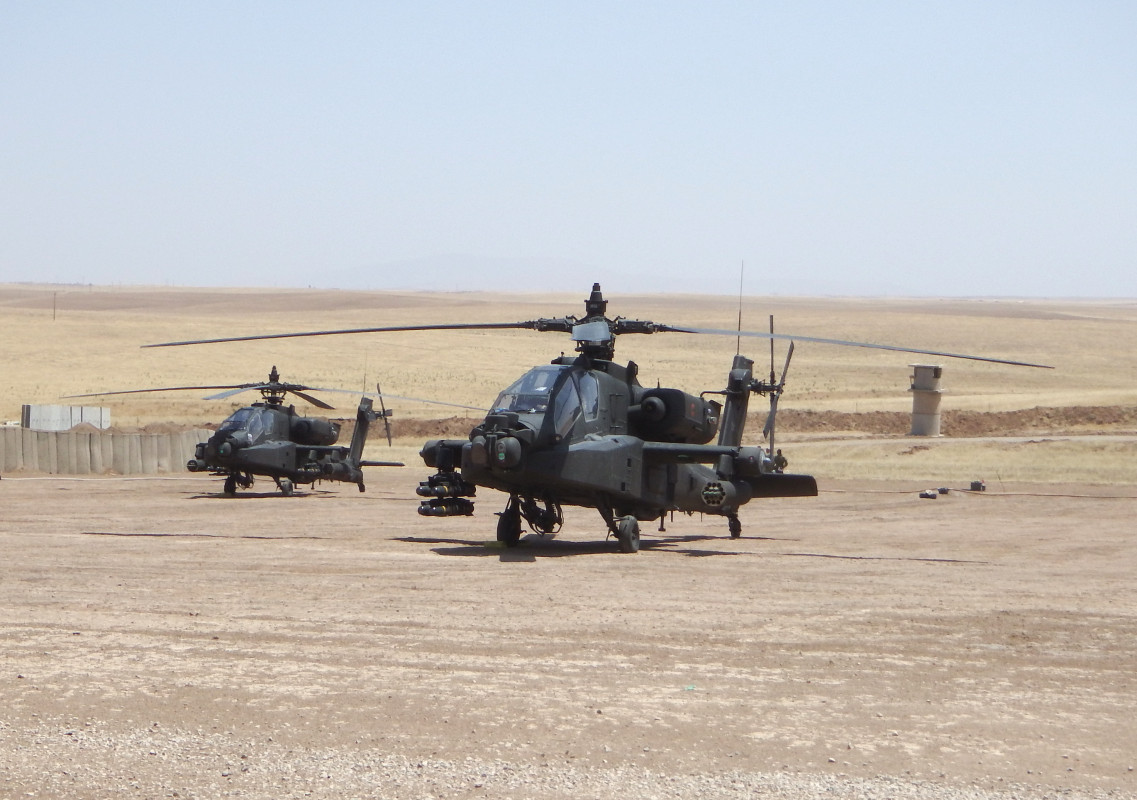
The Army is also separately working on an Improved Turbine Engine Program (ITEP) that will result in an improved, common engine for both the AH-64 and the UH-60 Black Hawk. However, the Army only plans to begin the turbine’s engineering and manufacturing development phase in 2023, which means it might not be ready for widespread operational use by 2026 when the service wants to finish fielding the Version 6 package.
Regardless of whether these additional capabilities make it into the Version 6 AH-64Es, the gunships still look set to receive an impressive array of upgrades that will leave them better equipped to conduct a wide array of different missions in various environments. If the Army does follow through with plans to continue operating the attack helicopters through 2048, it’s very likely that Apache will become even more capable in the decades to come.
Contact the author: jtrevithickpr@gmail.com
